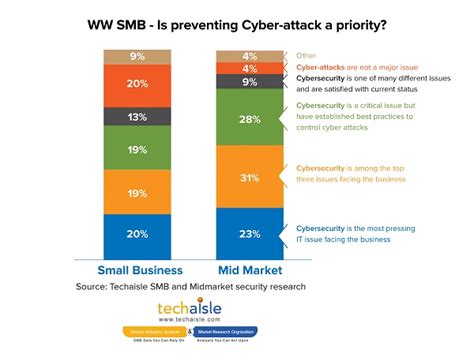In today’s ever-evolving digital landscape, cybersecurity threats loom large, posing a significant risk to businesses of all sizes. While headline-grabbing events involving major corporations often dominate the news cycle, it is the smaller technical disruptions that can have equally dire consequences for small and mid-sized businesses (SMBs). From data breaches like those experienced by Change Healthcare and Snowflake to the daily onslaught of cyberattacks targeting vulnerable SMBs, the need for robust security measures has never been more urgent.
“Security and cybersecurity threats are inevitable in today’s high-risk security environment.”
The State of SMB Cybersecurity reports alarming statistics, with 94% of SMBs falling victim to cyberattacks and a staggering 60% facing closure within six months post-incident. This paints a grim picture of the challenges SMBs face in safeguarding their digital assets against malicious actors seeking to exploit vulnerabilities for financial gain or disruption.
“Cyberattacks are also surging, with SMBs an increasingly favorite target.”
Moreover, research indicates that many SMBs lack adequate cybersecurity budgets, with only 8% allocating dedicated funds for protection. This leaves them exposed and unprepared to defend against sophisticated cyber threats that can result in devastating financial losses and reputational damage.
Expert Insights:
Erik Eisen, CEO of CTI Technical Services underscores the importance of proactive measures in fortifying cybersecurity defenses. He emphasizes the critical role of self-assessments in identifying vulnerabilities and recommends engaging IT service providers equipped with specialized expertise in security protocols.
Navigating the High-Risk Terrain:
With cyber threats on the rise and downtime costs escalating, it is imperative for SMBs to prioritize cybersecurity investments as a strategic imperative rather than an optional expense. The 2024 Observability Forecast underscores the prevalence of outages among businesses, highlighting the disruptive impact these incidents can have on operations and profitability.
“No business is safe from outages and attacks without proper safeguards.”
To mitigate risks effectively, SMBs must conduct thorough self-assessments across key areas such as staff training, security safeguards, software updates, vendor protocols, and business continuity planning. By evaluating these critical components of their IT infrastructure, organizations can pinpoint weaknesses and implement targeted solutions to bolster their resilience against potential threats.
Strategies for Long-Term Resilience:
Investing in cybersecurity should be viewed as a prudent allocation of resources rather than an extraneous cost. By conducting internal audits supplemented by external expertise where necessary,
“Determining security gaps doesn’t have to break the bank—it’s an investment in longevity.”
Businesses can enhance their risk posture while staying within budgetary constraints. Partnering with IT service providers versed in cybersecurity best practices offers a path towards sustainable protection against evolving threats that could compromise sensitive data or disrupt operations.
In conclusion:
SMBs must prioritize cybersecurity readiness as a fundamental pillar of their operational strategy to navigate today’s volatile threat landscape successfully. By adopting proactive measures guided by comprehensive assessments and expert guidance,



Leave feedback about this